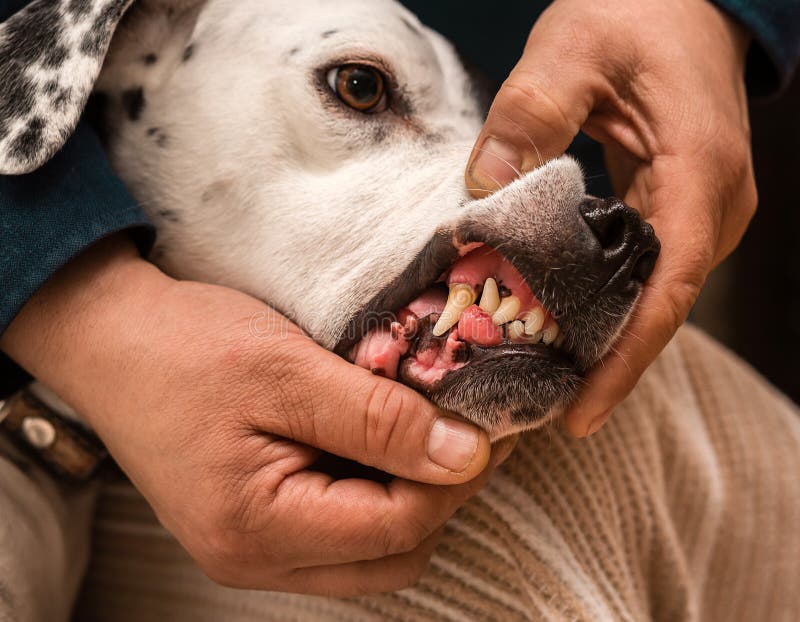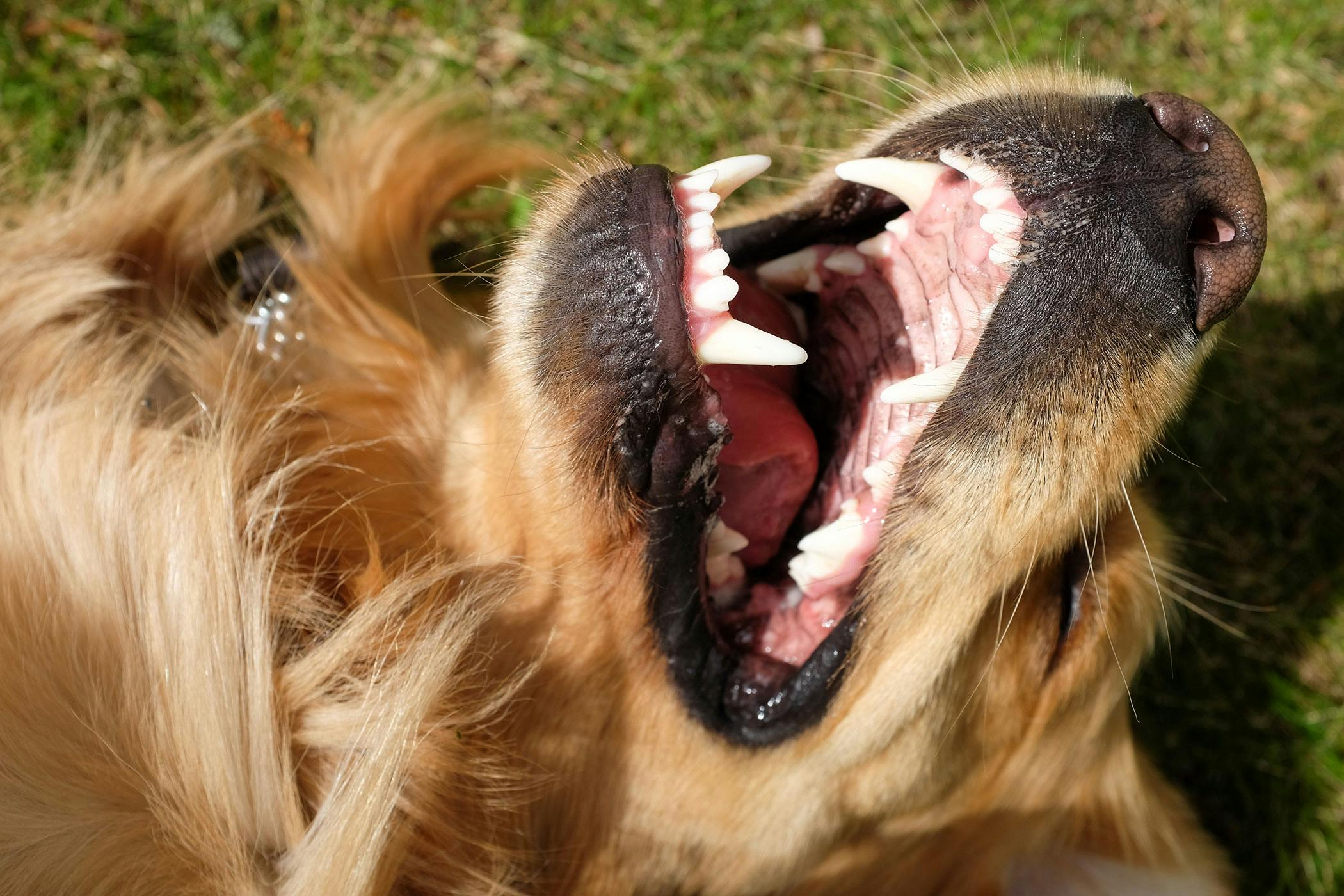
How to Spot an Epulis in Dogs 11 Steps (with Pictures) wikiHow Pet
Introduction Milo, a proud and caring dog parent, was alarmed when he noticed an unusual growth in his dog's mouth. Worried about its potential implications, Milo rushed to his trusted veterinarian, seeking answers. As the diagnosis of an epulis tumor was revealed, Milo's concern only grew.

Epulis Fibrous Type in a Dog 1 Stock Photo Image of surgery, care 242156814
An epulis is the most common benign tumor of the mouth in dogs. Dental surgery is needed to remove these tumors, and some large or non-resectable tumors may require radiation therapy. Severity: Severity is mild to moderate to severe Requires a diagnosis by a veterinarian Resolves within immediately following surgery in most cases

Closeup Photo Of A Dog With Epulis Stock Photo Download Image Now Alveolus, Animal Digestive
An epulis is a firm, pinkish and irregular growth found on the gum of middle-aged dogs (about 8 years of age on average). The growth can rarely occur in cats too. As long as the mass is small, there are few clinical signs. It can occur in any dog breed, but most commonly in brachycephalic breeds, i.e., breeds with a flat face, such as boxers.

How to Spot an Epulis in Dogs 11 Steps (with Pictures) wikiHow Pet
updated on September 1, 2023 | read time is about 8 minutes An epulis tumor in your dog's mouth may look scary, but many of them are completely treatable. Also called odontogenic tumors, these oral tumors in dogs arise from the teeth and associated structures.

Tumors of the Gums (Epulis) in Dogs Symptoms, Causes, Diagnosis, Treatment, Recovery
Epulides/epuli (plural of epulis) are common benign growths found in dogs' mouths. There are three types: Fibromatous Epulis was confirmed with biopsy. Courtesy Dr. Jan Bellows Fibromatous epulis appears on a stalk of tissue, much like a mushroom, or as an unmoving mass. It is usually pink in color and has a non-ulcerated smooth surface.

Large epulis in a Mastiff. Mastiffs, Mastiff dogs, Mastiff puppies
1-866-204-6773. E-MAIL. [email protected]. MAIL. PetCareRx.com. 52 Merton Avenue. Lynbrook, NY 11563. Epulis is a type of growth that occurs on the gums of dogs. Although they are usually unproblematic, if they are not treated, they might cause discomfort and o….

Epulis on the Gums of a Dog Stock Image Image of dentistry, puppy 259998381
Epulis can be detected as a fibrous growth between the teeth and may also be affecting the gum tissue. The color of the tumor won't stand out, as it will be pink, just like the dog's gums. The growth has a smooth texture. The dog may have 1 or several tumors located in various areas of the mouth. Lack of appetite or the dog will have a hard.

Hi, My dog has what appears to be an epulis on his upper jaw
An epulis is a tumor that develops in a dog's oral cavity. You will see them on the gingiva (gums). They may appear the same pinkish color as the gums, or can appear red and inflamed. Peripheral Odontogenic Fibromas in Dogs

How to Spot an Epulis in Dogs 11 Steps (with Pictures) wikiHow
Epulis in dogs, also known as peripheral odontogenic fibroma, is the most common benign oral mass found in dogs. These growths go by various names, including ossifying epulis, fibromatous epulis, and fibroosseous epulis. Table of Contents Types of Epulis Prevalence of Epulis in Dogs Symptoms of Epulis in Dogs What causes epulis in dogs?

Does Epulis Have To Be Removed
The Peripheral Odontogenic Fibroma (Epulis) is a clinical term referring to a slow growing, localized, exophytic mass on the gingiva resulting from chronic irritation. On presentation, the area of concern typically is a firm, pink, smooth swelling of the gingiva and normally seen as gingival hyperplasia.

Epulis Tumor Situated on Gingival Mucosa by Boxer Stock Image Image of mucosa, disease 93095143
1 Assess your dog's risk. Any dog may be susceptible to an epulis tumor; however, some dogs are more prone to this tumor than others, based on their breed and age. By learning your dog's risk of an epulis, you can be more proactive in monitoring your dog's health and looking for any signs of malignant growth in your dog's mouth.

How to Spot an Epulis (Gum Tumor) in Dogs wikiHow
Epulis is an oral tumor usually located near the dog's teeth in the gum tissue. This tumor will usually develop from the periodontal ligament. Epulis is considered a common tumor that can affect our dogs, so to help your pet, you must understand all the symptoms and signs. In most cases, epulis growth will be the same color as dogs' gums.
Why epulides merit attention Veterinary Practice News Canada
Peripheral odontogenic fibroma (formerly known as fibromatous and ossifying epulis) is a benign, often slow-growing tumor that arises from periodontal structures. They can be further sub-classified as peripheral odontogenic fibromas and acanthomatus ameloblastomas.

Epulis in a dog stock image. Image of hands, neoplasm 242156839
Gum boils, formerly known as epulides and now medically known as peripheral odontogenic fibromas, are benign tumors that usually grow on the dog's gums mostly concentrating in the area of the dog's front teeth by the incisors and canines.

Epulis Fibrous Type in a Dog Stock Image Image of health, fibrous 242156833
An epulis in dogs is a type of benign (non-cancerous) oral tumor or growth that occurs in the mouth, specifically on the gums. It is a relatively common condition in dogs and is characterized by the development of a firm, pink or reddish mass on the gingiva (the gums) or other soft tissues of the mouth..

Epulis tumor situated on gingival mucosa by boxer dog StockFoto Adobe Stock
Jean Farris Jun 8, 2017 There are three main types of epulis in dogs (also referred to as gum boils, masses found on the dog's gums) and their treatment may vary from one another. Epulides are benign tumors often found in the mouth of dogs. The term benign means that this type of tumor does not spread to other body parts as malignant tumors do.